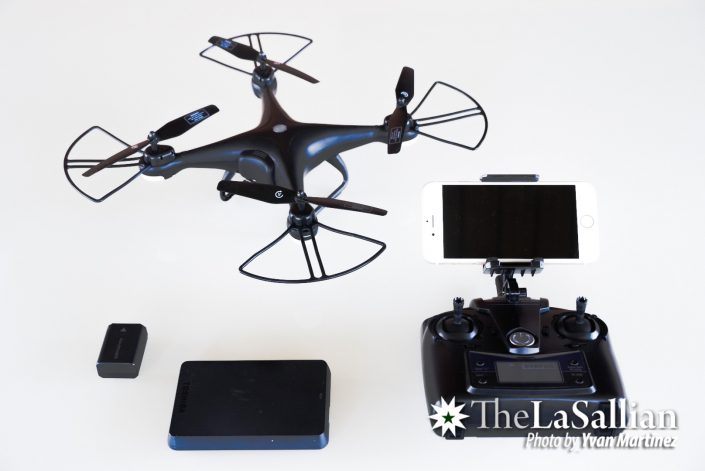Since the commercialization of unmanned aerial vehicles (UAV) or drones, multiple industries’ operations—such as those in photography and creatives, and specimen collection in scientific research—have been modified to incorporate the use of these technologies.
With the potential utilization of UAVs in multiple disciplines, X-LIPAD, the Philippines’ first UAV technology-focused research team, along with De La Salle University’s Center for Sustainable Development Research (CESDR), hosted a webinar titled Flying from the Ground: An Introduction to the Drones & UAV Technology—the first of a four-part series—last May 22 and explained the basics and their plans on the mass adoption of UAV technology.
More than meets the eye
While deceptively simple, the commercialized drones we see today still retain the complexity of the ones invented back in the First World War, bearing distinct rotors or a rotating assembly of blades that supplies lift and stability.
Examples of these drones include fixed-wing drones, which look and fly like commercial airplanes, but are 20 times smaller; single-rotor helicopters, small bird-sized drones which use a large rotor and a small tail rotor; and multi-rotor drones, characterized by at least four rotors and similar in size to single-rotor drones. The cheapest and easiest to use of the three, multi-rotor types are fairly popular among drone enthusiasts.
Dr. Edwin Sybingco, an associate professor in the University’s Electronics & Communications Engineering Department, explained that the most widely used multi-rotor drone—the quadcopter—contains several components under its frame. Four motors for each rotor are connected to what is called the electronic speed controller, which Sybingco described as “an electronic circuit with the purpose [of varying] an electric motor’s speed, direction, and braking”. On the other hand, the flight controller (FC) collects input from the pilot’s commands to determine how each motor will behave.
Most of the time, FCs have embedded sensors that take into account external factors to improve the accuracy of its calculations. A pressure sensor, for example, uses air pressure measurements as input data to estimate the current altitude of the drone, improving its stability to hover. This also allows the quadcopter to rotate in three different dimensions: pitch, or the movement of the drone forward or backward; roll, the drone’s sideways movement; and yaw, or the rotation of the drone’s head to the left or right.
Jack of all trades
Along with its sensors, drones can be equipped with a variety of features and additional components—from sprays to cameras—in order to carry out a specific purpose.
In an agricultural setting, “drones [may be used] to automate processes, spray fertilizers [evenly], and detect pests,” stated Engr. Maria Antonette Roque, Gokongwei College of Engineering Assistant Dean for External Affairs and Lasallian Mission and X-LIPAD member.

Drone surveillance can also help in disaster management as it enables responders to create a virtual model or map of a certain area, assess damages, and locate victims with the help of a thermal scanner. This thermal sensor is able to detect variations in temperature through walls and debris as infrared radiation, then translate these into heat signatures that the operators can visualize.
Currently, UAV technology may become a “natural fit” in implementing quarantine protocols, according to Roque, as it is already being used in the Philippines in monitoring compliance with physical distancing measures, delivering supplies, and disinfecting public areas in Pasig City.
However, before drones can be used for commercial purposes, one should obtain a certificate from the Civil Aviation Authority of the Philippines (CAAP). Roque reiterated that CAAP also has “set rules” with regard to drone flying such as prohibiting drones from flying over populated areas, at night, or during bad weather conditions. The need for certification can only be waived if the drone to be used weighs less than seven kilograms.
Drone education for all
“Since drones can be applied in many different industries, we have to maximize [their] use. Even the government sees drones as something very important. They are actually investing into this industry,” emphasized Mechanical Engineering Department Chair Dr. Alvin Chua.
Chua, along with X-LIPAD, plans to launch in July an “integrated autonomous educational system” on UAV technology through the Schools Pioneering Research and Education in Autonomous Drones project, following a “successful initial test with several universities and high school institutions”.
Ultimately, X-LIPAD’s goal is to “bring drone education to the whole world”. “We would like to not just [target] the Philippines, but [also] the whole world—one drone at a time,” Chua concluded.

One reply on “X-LIPAD, CESDR review fundamentals, mass adoption of UAV technology”
[…] article was originally posted in The LaSallian by Kenneth Edward […]